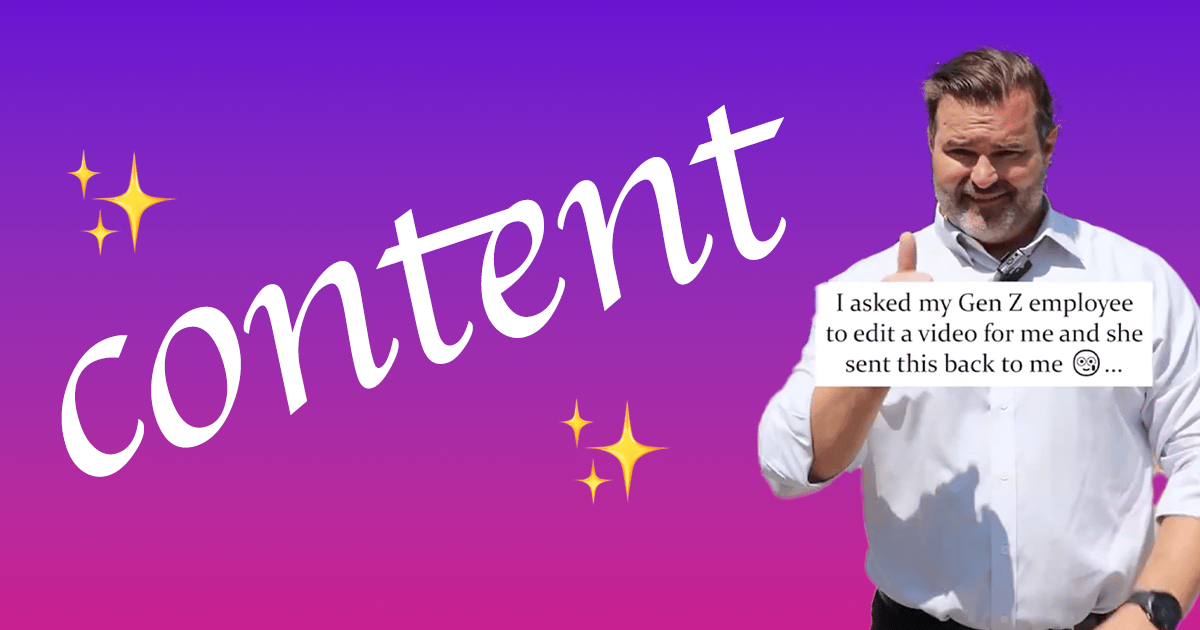- Thought Liters
- Posts
- How to Benefit from Gen Z's Corporate Content Era
How to Benefit from Gen Z's Corporate Content Era
Key strategies to make your presence pop like theirs (with receipts)
Unless you’ve just fallen out of a coconut tree, you’ve likely noticed that the Gen Z content style and sense of humor is FINALLY making a true mark on brand marketing. Let’s talk about it.
In today’s newsletter, I detail three strategies you can test to emulate Gen Z’s corporate content style — and earn outsized growth.

It’s their era; we’re finally living in it.
Gen Z, born 1997-2012, would’ve seen its first marketers enter the workforce out of school in 2019. Broadly valuing experiences over possessions, showing deep interest in individual expression, and being digitally native, one might wonder how it took them five years to find a foothold in brand content strategy. It baffles me. Regardless, it’s now their time — and the sooner you take advantage of it, the better. (Ideally, by hiring them — but I digress.)
First, to highlight Gen Z’s understanding that you don’t need flashy legacy marketing to leave a mark, I offer the below:
@philipp_the_flipf Help me prove to my marketing professor that TikTok is more powerful gaining followers than a billboard campaign. #fyp #foryou #poweroftik... See more
2 million views on a googly-eyed flip flop, with a 10% engagement rate to boot. Eat that, Prof. Billboard. Oh wait, you can’t — for Philipp hath left no crumbs.
This energy is slowly seeping its way into brand content today. On to the strategies, with numerous examples for you to check out:
Strategy 1: Clap With, Not Back: Back in 2017, Wendy’s took Twitter by storm by flame-broiling every user who dared drive through its page. These days, with Gen Z at the helm, brands take themselves less seriously, preferring responsive content that laughs with the heckler, not at them. Case in point, consider this from tbh skincare:
@tbhskincare Feeling inspired by all the love x #genzbossandamini #bootsandaslickedbackbun #workhumour #tbhskincare #skincareroutine
Here’s the lore (Mamamia has a thorough write-up): inspired by the viral “boots and a slick back bun” TikTok, tbh made its own, now-deleted version which garnered widespread hate. In response, tbh screencapped various comments and, in the same style as the original, used them as the script. Silly? Sure, maybe — but by going with the flow of troll traffic, rather than against it, tbh proved its savvy (and, I bet, picked up business).
Strategy 2: Inject Silliness into the Mundane: In 2013, I was among LinkedIn’s first intern class in NYC. Once, rather than respond “yes” to a mundane email request, I responded with the movie poster from 2000’s You Can Count on Me. I was called “unprofessional.” Oh, how times have changed. Take this video OOO message posted to TELUS’s TikTok account, or these email signoffs from Oilshore, a leader in transport fuels. It’s now acceptable — nay, appreciated — to inject a little public silliness into the humdrum workday.
My favorite recent example of this comes from Mike Hege, a Charlotte-based realtor and principal of Pridemore Properties.
@mikehege.realtor Help, she said I was cringe 😭@PridemoreProperties #fyp #breathingguy #breathingrealtor #inhale #genzedit #genzhumor
At just 3500 followers on TikTok today, Mike is on the up and up thanks to his Gen Z approach. While he certainly isn’t the only realtor being silly online (the crown for that is currently held by Trent Miller and his speed tours), he’s raking in crazy views for his troubles. The vast majority of his typical past posts see less than 500 views. Since he incorporated his Gen Z editor? Different story — 50k on the above; then 123k, 938k, and 991k. One video suggests he’s given the editor a raise. Do it again, Mike.
Strategy 3: Embrace the Explicit: In 2016, CNBC reported that corporate profanity was on the rise, judging from earnings transcripts. Back then, conference call cussing could cripple your career. These days, “hawk tuah” creates them.
As such, a little obscenity in the office seems to help more than harm. Returning to tbh skincare, consider this video highlighting a team activity. Completely normal, other than the background music referencing oral sex (clipped from Iggy Azalea’s “Work”). In a time where the captions and music are just as contextually important as the action of the video itself, the explicit lyrics actually make the piece better, adding to its girlboss gumption.
More subtle variants work, too. Here’s an example from Clarks:
@clarks serving since 1825 🤭 @chappell roan #clarks #fyp
The concept is simple enough — stitch with something culturally relevant (in this case, singer Chappell Roan — replace the presumed c-word with Clarks. Ta-da, you just netted 750k views in three days. In this case, the content isn’t even explicit; the mere suggestion of a swear word shot the video upward. Ooh, a billion dollar brand shouldn’t behave like this. How crass! Well, from the numbers, they apparently should — and you should, too.
Quick Conclusion: across the board, Gen Z’s message to corporate content marketing seems to be “lighten up.” They play along with haters, make the boring fun, and aren’t afraid of a little sailor mouth. When brands lean in this direction, they earn high views and engagement on their content, regardless of what their business actually does. So, especially if your goals as a brand marketer right now are to earn underpriced attention and outsized awareness…please at least test these strategies. I bet you’ll be pleased with the results.
Adam
Adam Conner, author of the On Brand Content newsletter, is the founder of Authentic Avenue, a B2B media production and creative strategy firm.